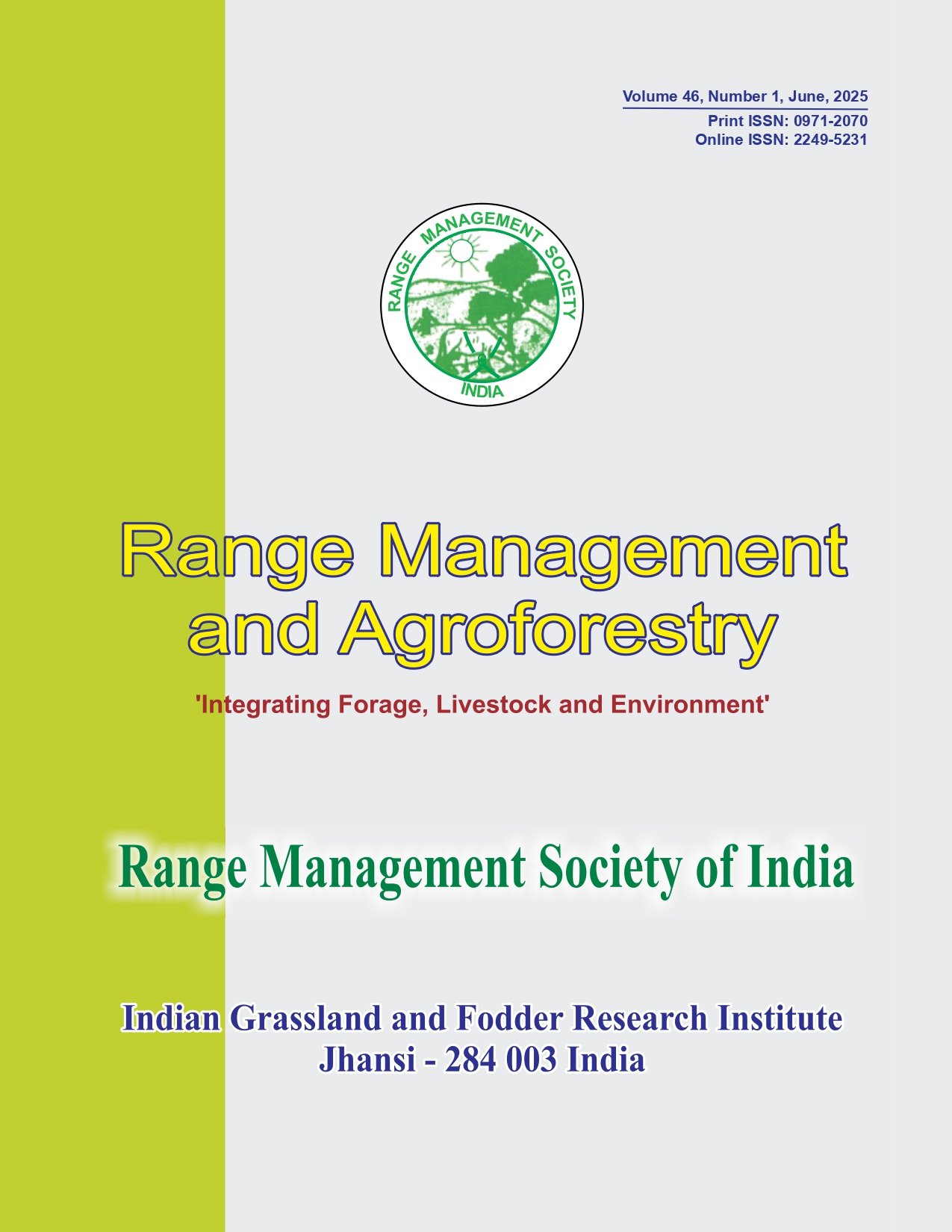Growth and yield performance of fodder grasses and their impact on soil physico-chemical properties in Jammu subtropics, India
DOI:
https://doi.org/10.59515/rma.2025.v46.i1.05Keywords:
Fodder yield, Grasses, Open, Shade, Sub-tropical, Terminalia chebulaAbstract
The growth and yield performance of seven fodder grasses were evaluated under tree shade and in open-field conditions during 2021-2023 in the sub-tropical region of Jammu, India. The experiment included 7 treatments representing different grass species: T1- Setaria anceps (var. S-25), T2- Sorghum bicolor, T3- Setaria anceps (var. PSS-1), T4- Pennisetum purpureum, T5- Paspalum notatum, T6- Brachiaria decumbens and T7- Natural grass, grown both under the shade of Terminalia chebula trees and in open (control) conditions. Tree shade recorded a positive effect on growth parameters exhibiting higher plant height, leaf length, and leaf area whereas, physiological attributes (chlorophyll content, crop growth rate, relative growth rate) and yield parameters (fresh and dry yield) of grasses were higher in open conditions. Only a marginal improvement in soil physico-chemical properties compared to the initial fertility status was recorded. The findings suggested that in order to enhance forage production and ensure year-round fodder availability the grass species might preferably be grown in open conditions. Setaria anceps var. PSS-1 exhibited the maximum fresh and dry forage yield and might be a suitable choice for open-field cultivation in this region.
Downloads
Downloads
Published
How to Cite
Issue
Section
License
Copyright (c) 2025 Jigmet Namgial, Dr. S.K. Gupta, Meenakshi Gupta, Vikas Abrol, Lalit Upadhaya, Mohd Javaid

This work is licensed under a Creative Commons Attribution-ShareAlike 4.0 International License.







